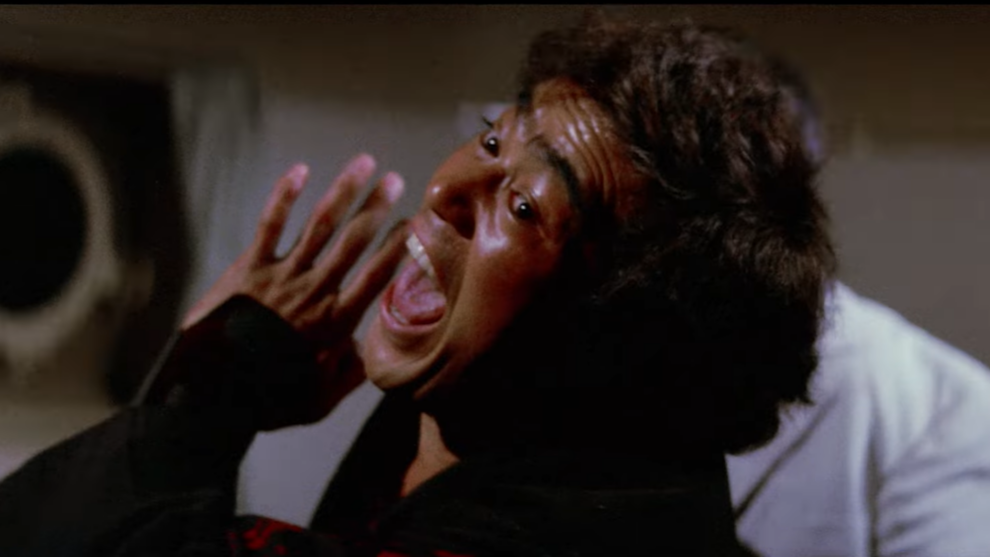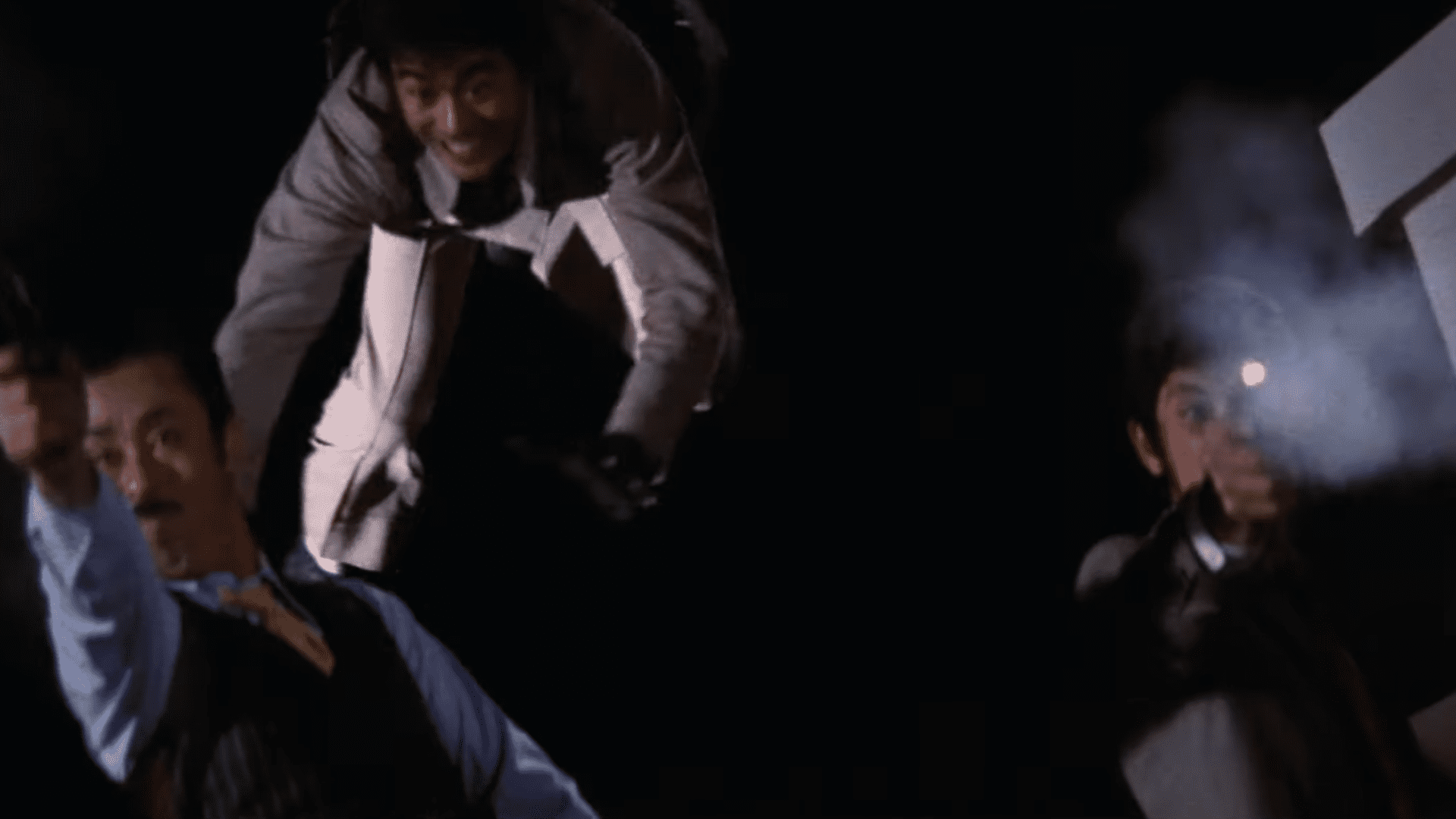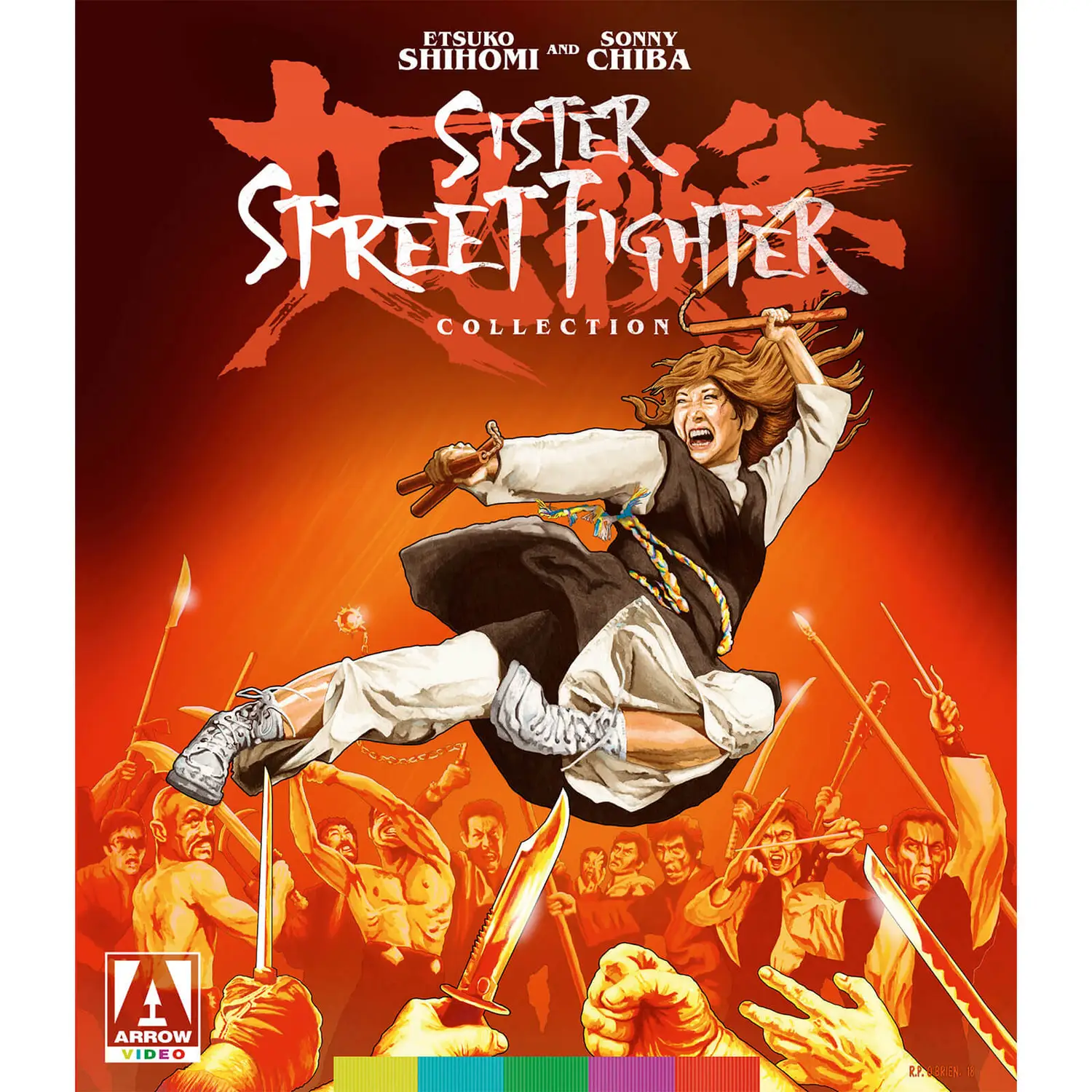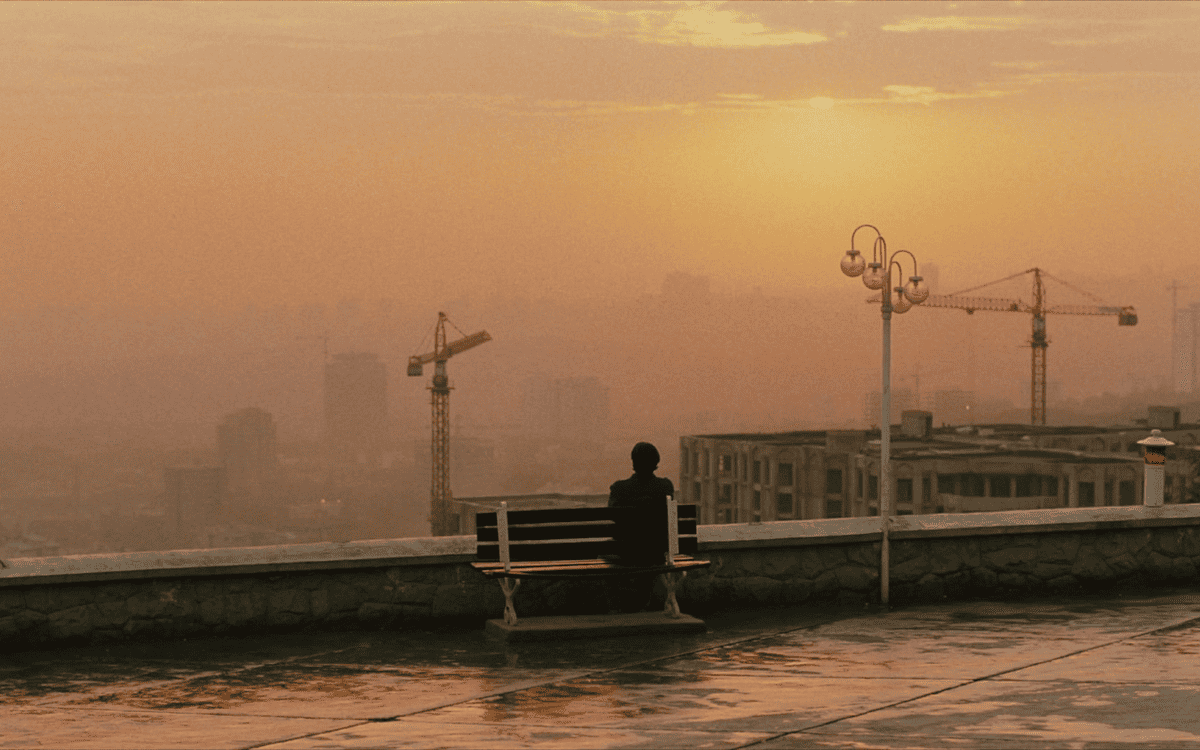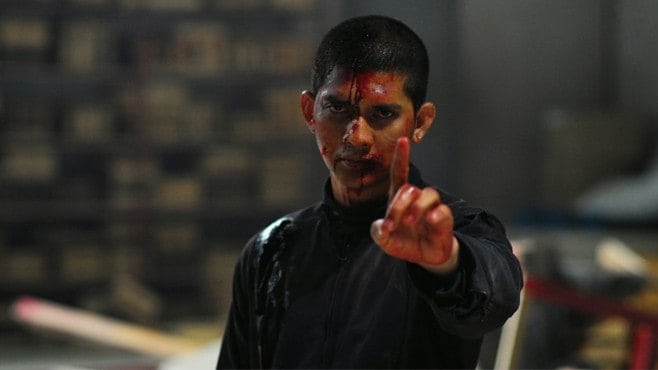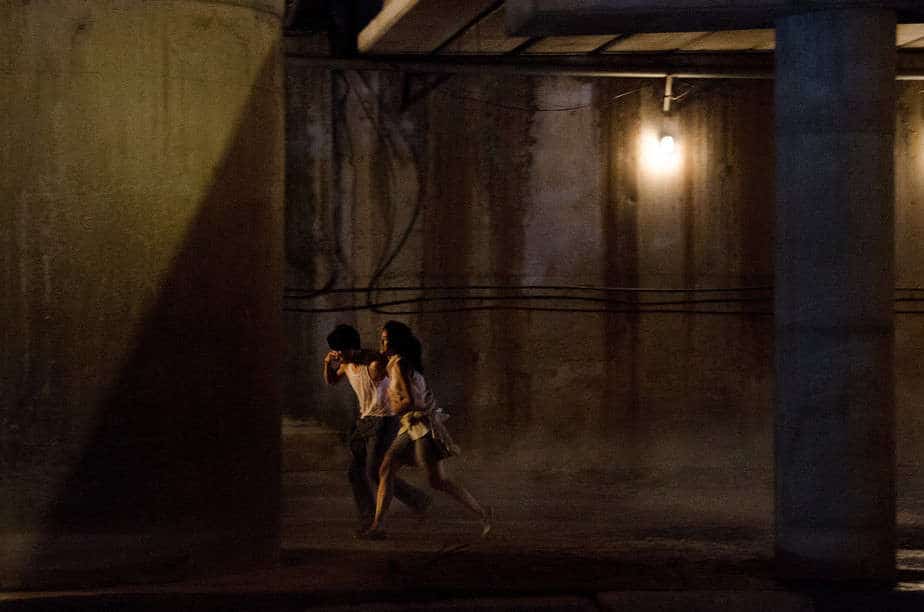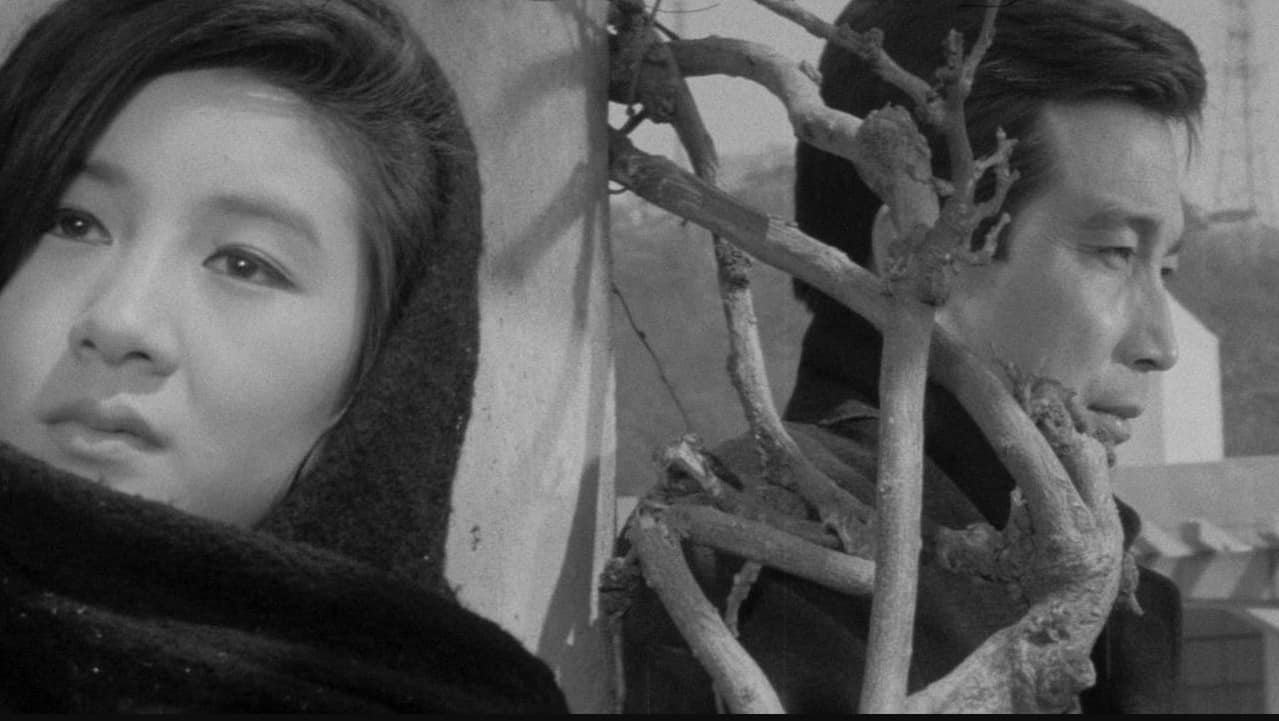1974: a great year for many filmmakers. This was the year Francis Ford Coppola released both “The Godfather: Part II” and “The Conversation”. Mel Brooks hit a prolific streak too with “Young Frankenstein” and “Blazing Saddles”. Over in West Germany, Rainer Werner Fassbinder continued his hot streak by directing FOUR feature films, including his most beloved work, “Ali: Fear Eats the Soul”. However, it was perhaps Shinichi ‘Sonny' Chiba who had the most iconic and significant year out of that roster, with a career-defining bumper year that contained an impressive amount of diversity for an actor nominally known as a martial arts star. Surrounding himself with the posse from his expert team ‘Japan Action Club' and with the backing of the Toei Company, Ltd., Chiba completed a full trilogy, a two-part crime caper saga, a spin-off to the aforementioned trilogy AND a powerful anti-war drama all in one year. In this list, this fascinating run of films will be examined from worst to best for their significant experimentation with Chiba as an action star, a dramatic lead and, perhaps more surprisingly, a comedy actor.
7. The Executioner II: Karate Inferno (Teruo Ishii, released 28th December 1974)
The second of Teruo Ishii's “Executioner” films (and the only sequel the controversial director ever made) marks the end of Chiba's jam-packed cinematic year with a lighter, sillier follow-up to this double-whammy of a crime caper. Chiba is still the star here, but his grumpy ninja Koga is given support from Sakura (Eiji Go playing the sleaziest Aikido master before Steven Seagal took that mantle) and Hayato (Makoto Sato, an ex-vice cop with a real love for extortion and murder); the trio form a good, bad and ugly group of criminals who would seemingly rather kill each other than work together. But when their task is the theft of a precious necklace for the biggest score of their lives, they'll have to put aside their egos until the job is done. Rather disappointingly, this one only delivers on its outrageous title in the final ten minutes where a huge brawl starts in front of a burning car, and otherwise, Chiba and co. are barely given a chance to prove their skills as martial artists, instead opting for a heist movie plot that occasionally delivers on Chiba's new-found comedy chops. Fans of toilet humour won't be disappointed, with the pee, poo and fart jokes extending from beginning to end, but fans of Chiba as a physical performer may be baffled by this left-field sequel to a wonderful example of why he became a star.
6. Miracle on Lubang Island: Army Nakano School (Jun'ya Satô, released 15th June 1974)
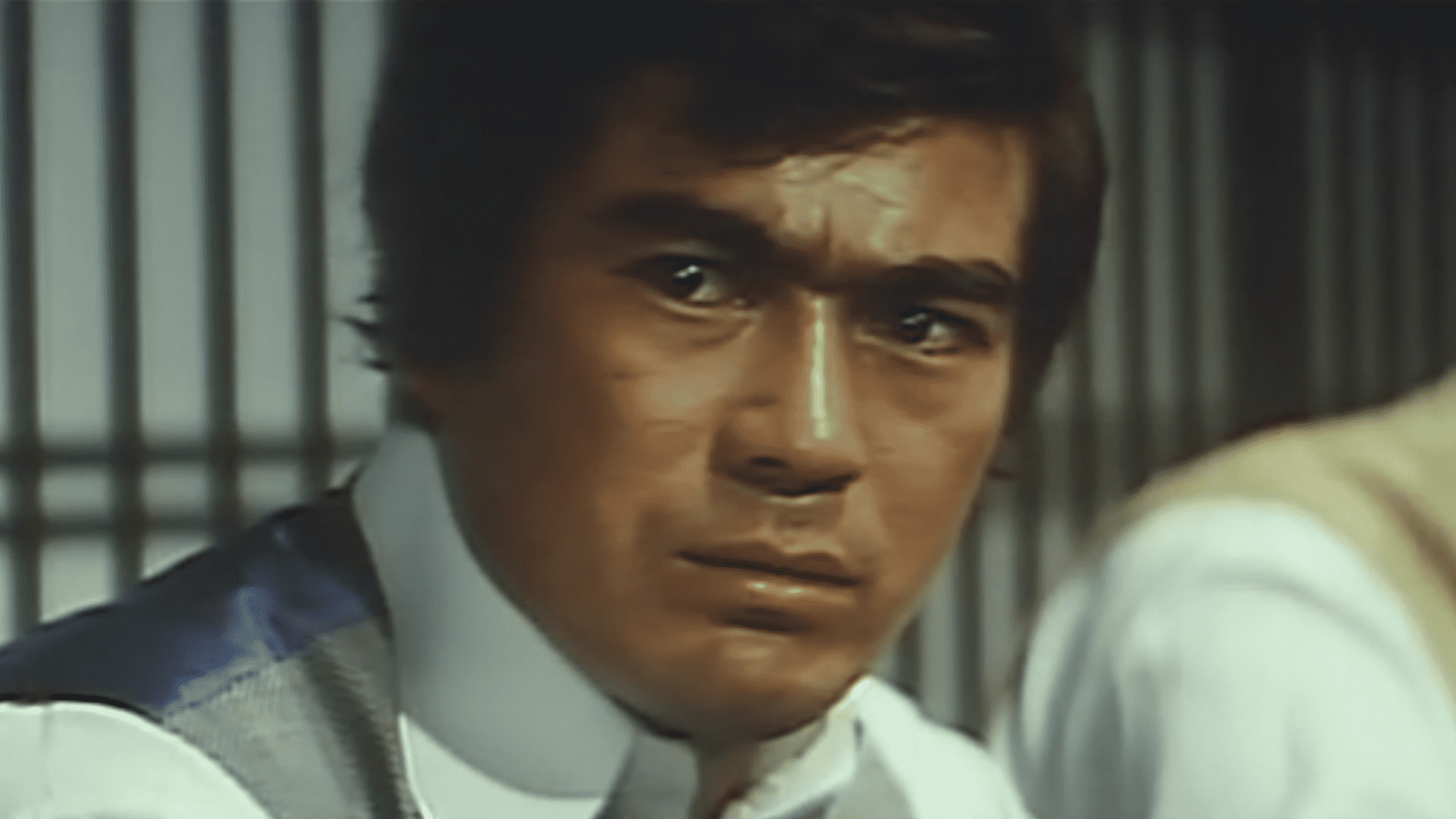
It should be noted that there are no known English subtitles for Junya Sato's emotional war drama, so non-Japanese speakers may struggle to keep up with the intricacies of its politics and sensitive character moments. Nevertheless, “Miracle on Lubang Island: Army Nakano School” is a fascinating departure for this period of Chiba's career, casting him as a recruit to a military school on the eponymous island in the latter stages of World War II. The school does contain some of Chiba's specialties as a performer; one montage sets the characters perfecting their karate skills, and the film goes on to see Chiba infiltrating a USSR embassy for state secrets (one of the many sequences of Chiba as an espionage expert during 1974). But what is perhaps more unexpected is his depth as a dramatic actor; his role doesn't allow for his vicious fighting style to shine, so he must instead bare his soul to the camera. His turmoil is palpable, caught in between outward patriotism and inward shame, and Chiba is fully convincing in what could have been a tricky role for him. While the film around him is fairly workmanlike and straightforward, it's a solid outlier for Chiba as an actor rather than a fighter.
5. Return of the Street Fighter (Shigehiro Ozawa, released 27th April 1974)
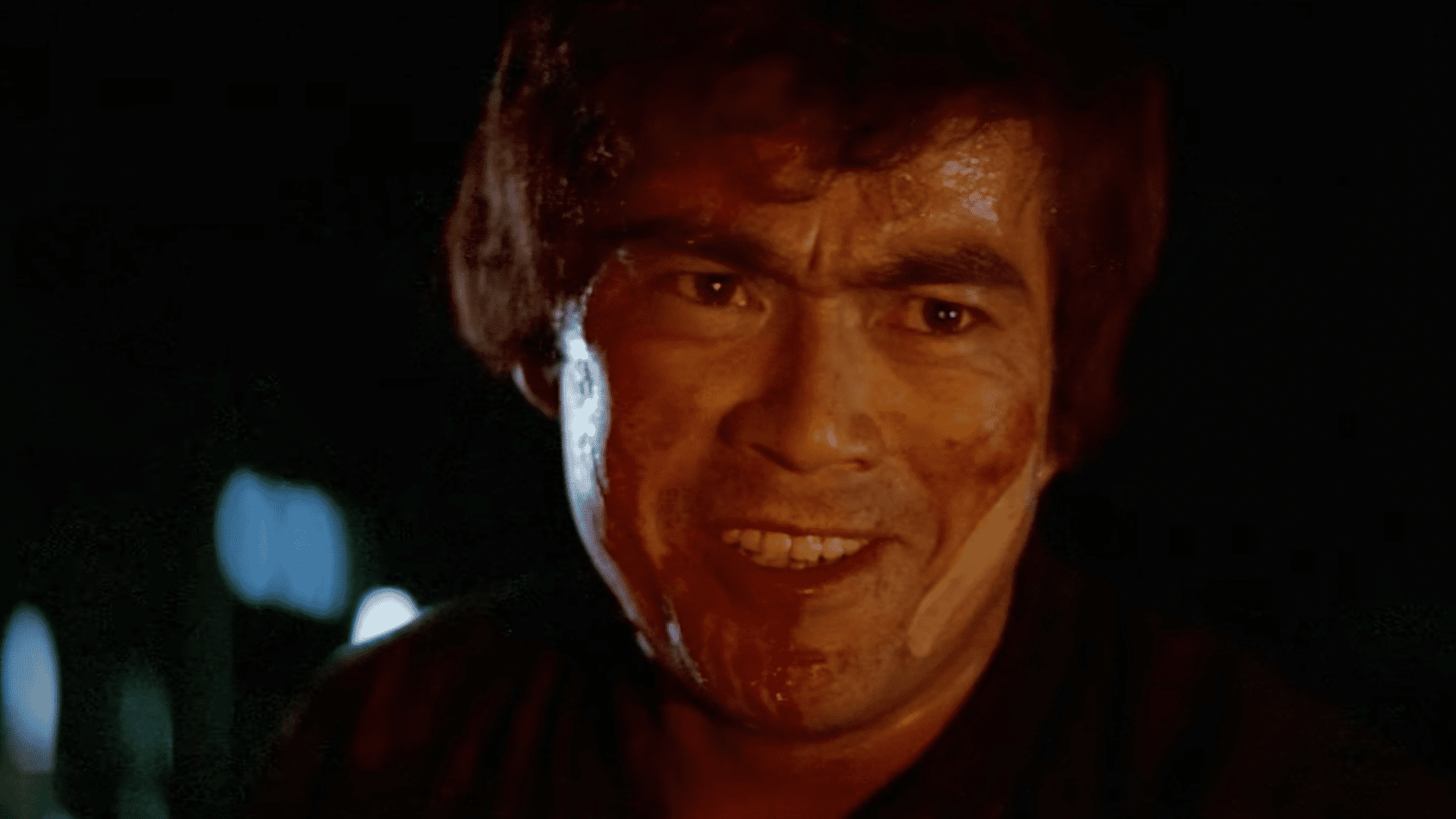
The middle part of Shigehiro Ozawa's “Street Fighter” trilogy is its weakest link, but still provides an enjoyable showcase for Chiba's brutal fighting style. His Takuma ‘Terry' Tsurugi is back, once again providing his services as a bare-knuckle mercenary to the Yakuza. It's no surprise that he's double-crossed by the American Mafia, pulling the strings on a scheme to use his sacred dojos as a front for money laundering. Given the small time-frame between the release of the original and its sequel, this is a slightly jarring film next to the down-and-dirty thrills of the original “Street Fighter”, as Tsurugi feels like a more upstanding citizen for no apparent reason. Part of the charm of this franchise is its lurid transgressions, as Tsurugi is a heel, a man motivated by money and sex (and the power that comes with both). This sees him take a small step back on that front, making this a more sanitised, cartoonish entry to an episodic saga of grievous bodily harm. What a cartoon it can be though: the reappearance of a central villain from the original with a set of robotic vocal chords is a total blast, aligning it more with the Bond films of the era than Chiba's own brand of scrappy crime tales.
4. The Street Fighter's Last Revenge (Shigehiro Ozawa, released 22nd November 1974)
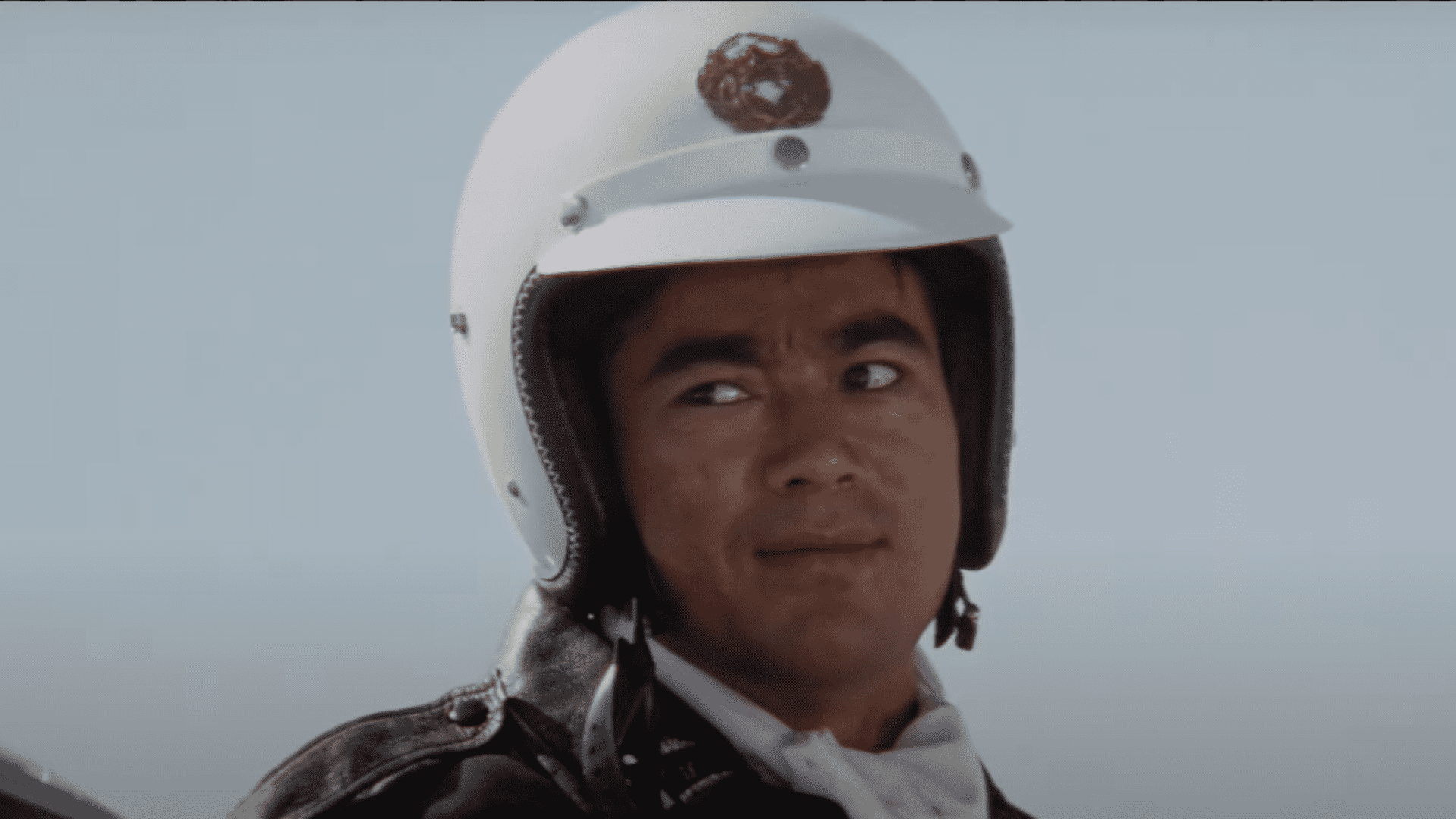
Chiba's last outing as Takuma Tsurugi strikes a very satisfying balance between the original's harshness and its sequel's silliness. Tsurugi has now become the man “who makes the impossible possible”, adding to his skills as a ferocious fighter by becoming a master of disguise, complete with a wardrobe full of latex faces Ethan Hunt would be proud of. The stakes are higher here too; there's corruption on a governmental level (shock!) and Tsurugi is on the hunt for a tape to prove it…to then sell to the highest bidder. He encounters a shadow version of himself in Koji Wada's public prosecutor Kunigami, who is able to run circles around Tsurugi both in brawn and brains. The film is still full of colorful bad guys like Dorian Howard's sombrero-wearing, laser beam-shooting Australian hitman Mr Black, but it's perhaps the only “Street Fighter” entry where the villain feels like a genuine threat to Tsurugi. A huge number of dizzying double-crosses spin this into a genuinely nihilistic conclusion, and it's bold of the franchise to stop at this savage moment, where Tsurugi is forced to reflect on his inability to trust another human being with a bang.
3. Sister Street Fighter (Kazuhiko Yamaguchi, released 31st August 1974)

Chiba's only supporting performance in 1974 is a very appropriate one, taking a backseat to let a fellow and integral member of the Japan Action Club drive this vehicle. Etsuko Shihomi is Koryu Li, a Shorinji Kempo expert whose police officer brother goes missing after uncovering some disturbing secrets about a drug smuggling operation out of Hong Kong. This is the most colorful and kinetic of Chiba's films from 1974, a near-constant barrage of fight sequences with a wholesome, indefatigable and fierce heroine at its center. Shihomi is a total delight, and it's no wonder her performance launched three more “Sister Street Fighter” films off the back of this one. Chiba is heavily advertised in the film's marketing, but does not portray Takuma Tsurugi, instead taking on the role of supporting fighter and compatriot Sonny Hibachi. He too is more heroic here, yet knows the film is not his to steal. Shihomi also fills in a variety of roles in the “Street Fighter” trilogy and appears in “The Executioner: Karate Inferno”, and unfortunately does not get the limelight she deserves in those pictures. The “Sister Street Fighter” quadrilogy is her domain, however, and dominates it with considerable power and charisma.
Buy This Title
by clicking on the image below
2. The Street Fighter (Shigehiro Ozawa, released 2nd February 1974)

The controversial film that introduced Shinichi Chiba to the world stage retains its savage power even today. As the first film rated X in the USA simply because of its violence, Chiba's first outing as Takuma Tsurugi is an uncompromising triumph of martial arts cinema. His character introduction earns his fearsome reputation; his plan to get a death row inmate Shikenbaru (a marvelously dour Masashi Ishibashi) off on a technicality by applying the “oxygen coma punch” ahead of the execution. This job goes well, and Shikenbaru escapes to Hong Kong, only for Shikenbaru's brother to disagree with the plan and go toe-to-toe with Tsurugi over the matter…only for Tsurugi to spectacularly toss him out of a window to shut him up. The tone is set: this man cares not for anyone's nonsense. Organs and appendages are ripped out/off by Chiba over the full-on 90 minute runtime, which functions as a complete showcase for his impressive, terrifying abilities as a martial artist. His breathing technique sounds like Darth Vader sucking a lemon, a guttural choke of pure ferocity that never loses its unsettling power. By the time the film's rain-slicked, windswept finale rolls around, it's impossible not to be convinced by Chiba's status as an off-kilter action star, a hero so single-minded and dynamic that he boomerangs back towards being a villain. This is Chiba's purest film because of that strange dichotomy.
1. The Executioner (Teruo Ishii, released 10th August 1974)
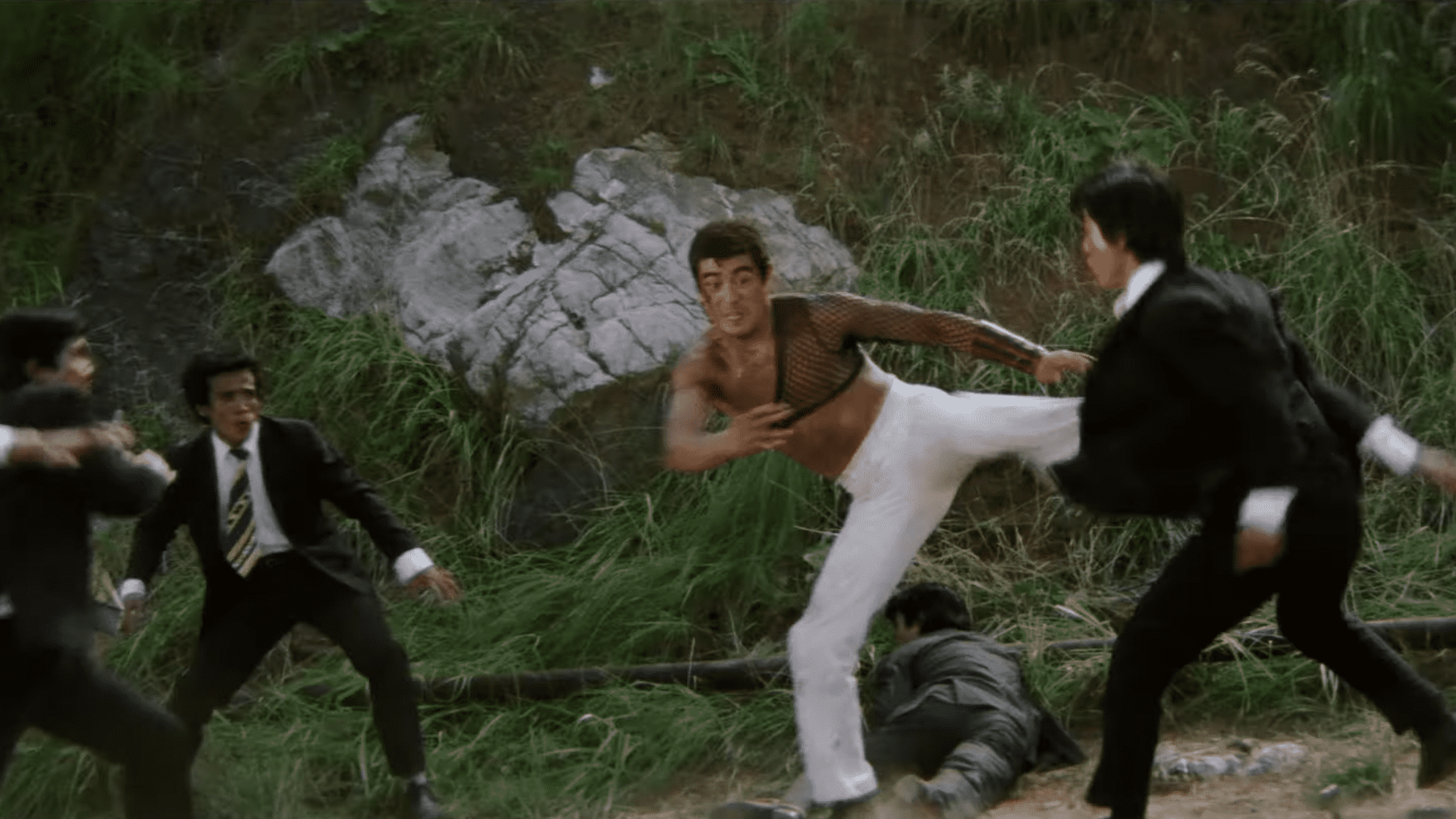
If “The Street Fighter” holds the title for Chiba's purest film, this is a strong argument for his best. Although its sequel goes off the rails fairly quickly, “The Executioner” remains an excitingly nasty cocktail of sicko comedy and gorehound action, with Chiba balancing his status as a compelling action lead with a sense of humour to boot. The wayward team of Koga, Sakura and Hayato is sent on a series of missions to bring down a made-man Mafia drug dealer named Mario Mizahara (Masahiko Tsugawa). This gives Ishii's script a loose energy that he applies to an ingenious caper structure, full of episodic fights and cruel slapstick gags that range from very witty to bracingly offensive. The real delight comes in how he shoots the fights; shooting in wide-angle long takes, the camera takes a backseat and lets the fists fly, and although it isn't as kinetic as Ozawa's method of evocative cutting and handheld photography, it's an impressive display of athleticism for every performer. And what a climax too! The action travels from a luxury mansion getting trashed to a seaside clifftop, and Chiba fully commands the screen. Whether he's using a grappling hook attached to a man's leg to scale a rockface or making nunchucks out of his string vest, Chiba is electric and all Ishii can do is sit back in awe. It's a rousing spectacle, and the fitting crown jewel of one of the greatest years for any action star, maybe ever.


